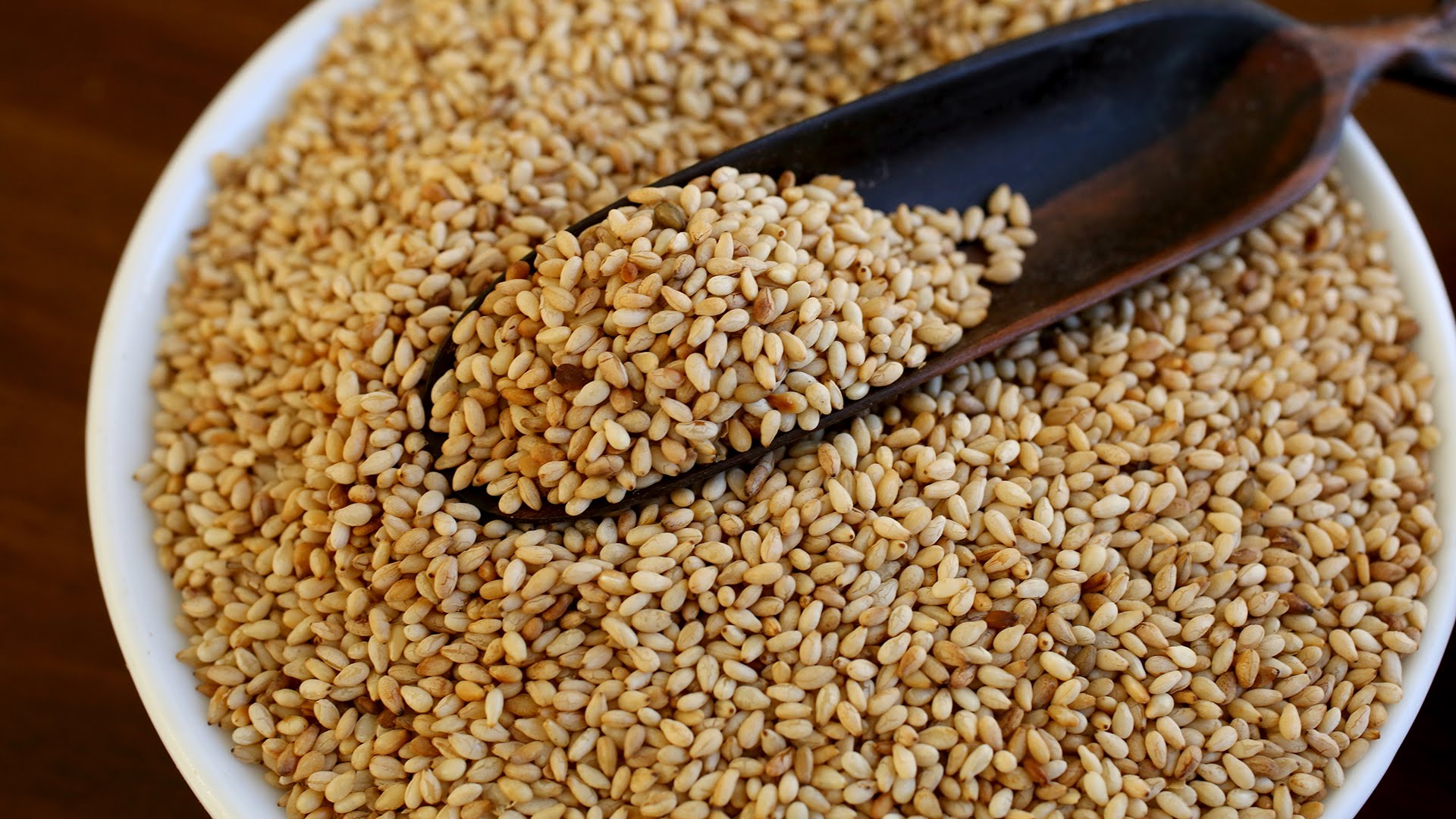
Sesame is a flowering plant in the genus Sesamum, also called benne Numerous wild relatives occur in Africa and a smaller number in India.
It is widely naturalized in tropical regions around the world and is cultivated for its edible seeds, which grow in pods. World production in 2018 was 6 million tonnes, with Sudan, Myanmar, and India as the largest producers.
Sesame seed is one of the oldest oilseed crops known, domesticated well over 3000 years ago. Sesamum has many other species, most being wild and native to sub-Saharan Africa. S. indicum, the cultivated type, originated in India. It tolerates drought conditions well, growing where other crops fail. Sesame has one of the highest oil contents of any seed. With a rich, nutty flavor, it is a common ingredient in cuisines around the world. Like other seeds and foods, it can trigger allergic reactions in some people.
Sesame seed is considered to be the oldest oilseed crop known to humanity. The genus has many species, and most are wild. Most wild species of the genus Sesamum are native to sub-Saharan Africa. S. indicum, the cultivated type, originated in India.
Archaeological remnants suggest sesame was first domesticated in the Indian subcontinent dating to 5500 years ago. Charred remains of sesame recovered from archeological excavations have been dated to 3500-3050 BC. Fuller claims trading of sesame between Mesopotamia and the Indian subcontinent occurred by 2000 BC. It is possible that the Indus Valley Civilization exported sesame oil to Mesopotamia, where it was known as ilu in Sumerian and ellu in Akkadian.
Some reports claim sesame was cultivated in Egypt during the Ptolemaic period, while others suggest the New Kingdom. Egyptians called it sesemt, and it is included in the list of medicinal drugs in the scrolls of the Ebers Papyrus dated to be over 3600 years old. Excavations of King Tutankhamen uncovered baskets of sesame among other grave goods, suggesting that sesame was present in Egypt by 1350 BC. Archeological reports indicate that sesame was grown and pressed to extract oil at least 2750 years ago in the empire of Urartu. Others believe it may have originated in Ethiopia.
The historic origin of sesame was favored by its ability to grow in areas that do not support the growth of other crops. It is also a robust crop that needs little farming support—it grows in drought conditions, in high heat, with residual moisture in soil after monsoons are gone or even when rains fail or when rains are excessive. It was a crop that could be grown by subsistence farmers at the edge of deserts, where no other crops grow. Sesame has been called a survivor crop.
 Trading Co.
Trading Co.